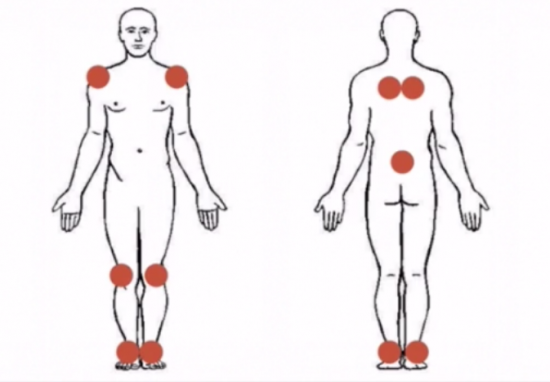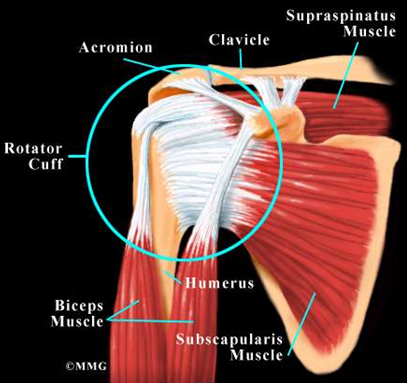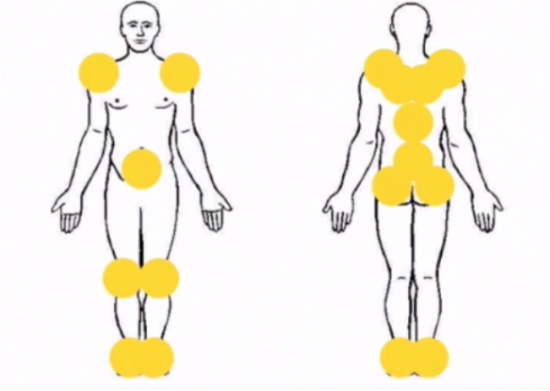Guest post written by: Kate Galliett
If you’re not careful, you can get sucked into an abyss of information as you study the paleo diet, low-inflammation foods, primal living, carb-cycling, etc. There’s so many things to tinker with, but like a mighty oak tree standing tall in the harshest rain storm, Robb has always reminded us that the first and best place to start is with a simple 30-day elimination plan, and then expect to extend that out for several months before you start tinkering with all the bells and whistles.
What’s great about that approach is that its simple. And it works pretty dang well as is. It’s a framework for all other things to be built on.
The physical training we do for our bodies isn’t any different. There are piles of info you can find online drilling down to the most detailed of details. But if you don’t have a framework to build all your other fitness things on top of, you’re just like someone messing around with carb-cycling or intermittent fasting who hasn’t gotten the basics right yet.
If you have aches & pains that aren’t going away, or worse, you’re straight-up injured, think about taking a step back to check that your foundation, your movement-quality at its root level, is being addressed. Simplify so you can multiply, as it were.
To help you do that, I’d like to expand on the framework that I shared with you in this post and this one. The 6 Pillars model was what developed out of my years of seeing clients walk in for the first time carrying with them similar injuries, again and again.
As I helped those folks get out of “aches & pains city” and into “unbreakable, ready-for-anything territory” I started to develop a simple organization of a persons’ movement practice so that we ensured we were taking care of the main ‘linchpins’ that kept the body upright, awesome, and ready for anything.
When these 6 areas are weak and have poor movement-quality, aches, pains and injuries tend to show up too. 
What Happens When The 6 Pillars Are Missing
When the feet have no muscle tone to the arch area and there is lacking mobility in the ankle, problems arise not just for the foot, but the entire leg.
When the glutes don’t fire well (or at all) in isolation, other muscles naturally take over those duties and things like quad-dominance and it’s spawn, knee pain, show up. Piriformis issues can arise, low back pain can flourish; essentially, life without strong glutes, doesn’t feel like a great life.
When the hips aren’t stable, pain along the inner and outer thighs can show up.
When the core isn’t strong, the hip flexor muscles (psoas & iliacus) and low back muscles (erectors, multifidus, and quadratus lumborum especially) can get mega strong, and not in a good way. The coordination of all of the muscles of the core is so important, we don’t want to leave just one or two muscles to do what is meant to be work for many.
When the scapula aren’t stable, pain crops up in a multitude of places, and considering that the shoulder is such a complex joint with so many muscles attaching to the shoulder blade, clavicle, and humeral head, it’s no wonder that a lot can go wrong when the shoulder complex isn’t strong and stable. 
When the postural muscles are weak, the classic ‘desk-worker’ symptoms set in – low back pain, intense discomfort in the mid- to upper- back region, and a tendency to “throw ones’ back out.”
Now, what if we backed up (or started for the first time if you’re new to fitness) and built up the strength and mobility of each of those 6 pillars?
What would happen if we created enough mobility so the part of the skeleton where each pillar sits could move as it was made to do? What if we strengthened each pillar location so that it was stable and supportive of high-quality movement at all times? 
Apply The 6 Pillars Framework On Yourself
Look at your 6 pillars. Look at where you have aches & pains. See if all of your pillars are on-point. There is a specific movement assessment tool that is part of both my in-person coaching and the online program I created, but I wanted to give you really simple questions you can ask yourself right now to get an idea of the status of your 6 pillars.
Feet
How is the tone of the muscles in my foot and arch? (Remember, “flat feet” aren’t a thing you’re stuck with.) Do I have an arch at all? Have I ever had pain in my feet, heels, or lower legs?
Glutes
Do I have good muscle development in my glutes? Have I ever had sciatic nerve pain? Have I ever been told I am “quad-dominant”? Do I have knee pain?
Hips
Do I get pain down the inside or outside of my thighs?
Scapular Stabilizers
Have I ever had rotator cuff injuries? Do I get upper neck pain? Do I ever get pain in my biceps?
Postural Muscles
Am I required to sit for most of my day? Do I get aches in in my upper or lower back? Have I ever “thrown my back out” doing practically nothing?
If you answered “yes” to any of the pain questions, it’s clear that you will want to give some time & attention to that specific pillar.
If you answered “no” to any of the ‘muscle tone’ questions, that’s a clear sign you’ll want to dial in to those areas.
Instead of creating a workout that includes “stuff for your legs”, and “stuff for your core”, look at your body through the lens of the 6 pillars, and select exercises and movements based on how strong (or not) and how mobile (or not) each of your 6 pillars are.
Use this framework to get to the root of what you need. If you’re lacking mobility, stability, strength or durability in any of your pillars…what results are you just leaving on the table by ignoring it any longer?
You can build a durable, injury-resistant, strong foundation of strength & mobility that allows for all of the sexy fitness add-ons you want to do in your life, without fear of body breakdowns.
These questions within the framework that I’ve posed today get you started. And just as Robb has laid out the full framework for a paleo-lifestyle in his book, The Paleo Solution, I’ve done the same for you in my online program, The Unbreakable Body. In the program I spread out every aspect of the 6 pillar framework and show you how it works and how you can make it work for you.
Within the program, we’ll dig right in to which of your 6 pillars are on-point and which aren’t, thanks to the proprietary 6-question self-assessment I developed for the program that determines where your strength & mobility levels are at in each of the pillars.
You’re then provided with 12 week cycles of programming to address your pillars exactly where they need to be met, and bring you up to a new level of foundational strength & movement-quality. Exactly what mobility work you need, and exactly how to strengthen each pillar so that aches & pains disappear, and your movement quality and capacity grow exponentially.
So if your aches & pains aren’t going away, or your acute injuries have now become chronic, think about taking a step back to check that your pillars, your very foundation, are being addressed. The Unbreakable Body will help you do just that. I’ve created a special page for Robb’s readers over on the program site. You can check it out here: www.theunbreakablebody.com/


I remember reading about this when I saw your barefoot post – it looks awesome! Really accessible and easy to follow. I intend to give it a go myself in the near future if I have some spare cash.
I tend to exercise quite “paleo” for the most part, generally mixing low amounts of heavy barbell lifting with the occasional sprint sessions, however I’m doing this less and less because I play 5-a-side football (or soccer) twice a week. After my two nights of football, my body feels battered! Do you think something like this would significantly help to improve my recovery time? Or maybe some yoga or something?
I’m aware exercising this intensely on consecutive nights is probably pretty bad in many ways, especially as the form of exercise is pretty joint pounding, but I’m not really willing to give it up, so I’m only really interested in improving the speed of my recovery and preventing injury!
“I’ve created a special page for Robb’s readers over on the program site. You can check it out here”..
come on man.. dont insult peoples intelligence. its an affiliated kick-back link nothing else.
Tom- I also have a “Robb’s reading list” from Amazon. Put on your super-sleuth hat and connect the dots big boy! Conspiracy. Yes, it’s an affiliate link, and YES it is exclusive to folks coming from RW.com. Feedback from the program has been fantastic. If all this taxes your moral code go found a church. Or something.
I dont have a problem with affiliated links. Tons of hours goes in to peoples work online and its a good way to get something back for the effort and knowledged spread (often for minimum return).
Of course its “exclusive” to your readers. Why would she, or anyone else, pay you for other visitors coming to the site that you havent sent? However, i doubt the content is exclusive.
I’m sure its a good program and i might very well give it a go, its just that my BS alram went off a tad bit.. no need to go hunt down a church for that.